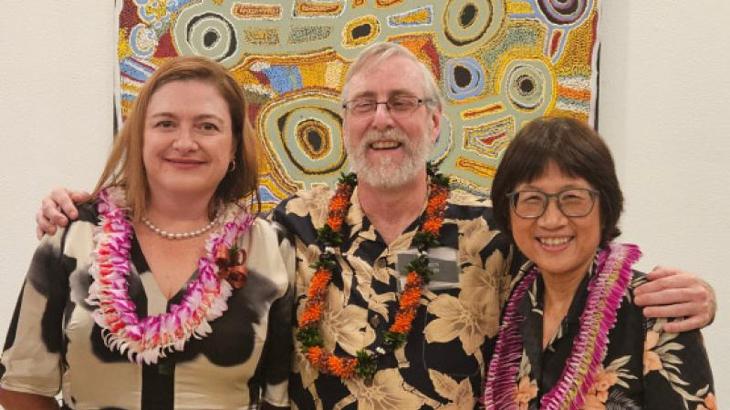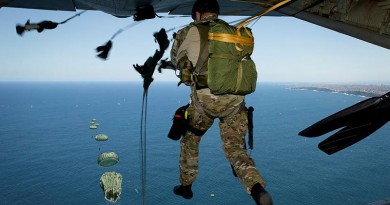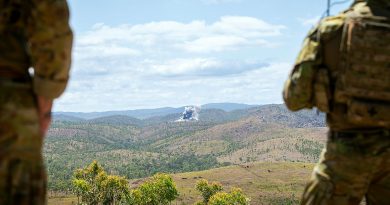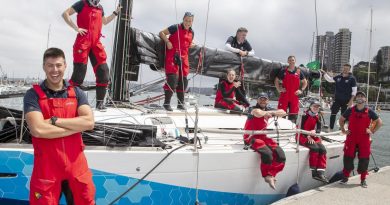Collaborating on the future of Defence

Chief Defence Scientist Tanya Monro has led a delegation to the Pacific Operational Science and Technology (POST) Conference in Hawaii, discussing the role of science and technology in Australia’s defence priorities.
CAPTION: Chief Defence Scientist Tanya Monro, left, Minister-Counsellor Defence Science and Technology – Washington Darren Sutton, and US Under Secretary of Defense for Research and Engineering Heidi Shyu at the POST Conference in Hawaii. Story by Emma Thompson.
POST is a leading forum for collaboration and the exploration of opportunities for joint research, development and experimentation with the US Department of Defense and Indo-Pacific partners.
Increasingly, Defence innovation, science and technology activities are focused on delivering new technologies that can provide the ADF with an asymmetric advantage.
Technology has a significant impact on the character of warfare and deterrence, and the Defence Strategic Review recognised that it will shape the changing balance of power.
Collaboration and cooperation with international partners is increasingly paying dividends, as the ADF combines its strengths and resources to achieve shared security goals.
Co-sponsored by the US Indo-Pacific Command and the National Defense Industrial Association, the POST Conference shared and examined operational issues in the region, and provided a forum for government, industry and academia to discuss and recommend solutions to these challenges in a series of open and closed sessions.
Professor Monro presented a keynote address covering Defence Science and Technology Group and its role in delivering Australia’s defence priorities, as well as an update on Australia’s innovation, science and technology ecosystem and the Advanced Strategic Capabilities Accelerator.
Professor Monro discussed an approach to asymmetry, a range of capabilities, and areas of Australian focus such as autonomous systems like Ghost Bat and Ghost Shark, undersea warfare, and advances in the automation of command and control (C2) for operations, including the Agile C2 STaRShot Digital Twin known as ‘Phoebe’.
“Strengthening Australia’s defence capabilities and working with partners to invest in their capabilities is a prudent response to our changing strategic environment,” Professor Monro said.
Among the Defence delegation at POST were Chief Joint Operations Science and Technology, Duncan Tailby, and Director General Modernisation, Assessment and Assurance from Headquarters Joint Operations Command, Commodore Andrew Quinn.
The pair presented an overview of Australia’s operational priorities, and the science and technology support needed to address these.
POST also brought together industry executives and engineers, university researchers, and other senior Defence Force representatives, to collaborate on how best to contribute to a free and open Indo-Pacific region through science and technology.
“The recent Defence Industry Development Strategy states we must identify and articulate priorities to industry,” Professor Monro said.
“Australia will continue to work with our partners to build a region that is stable, peaceful and prosperous, and where sovereignty is respected.”
.
.

.
.





